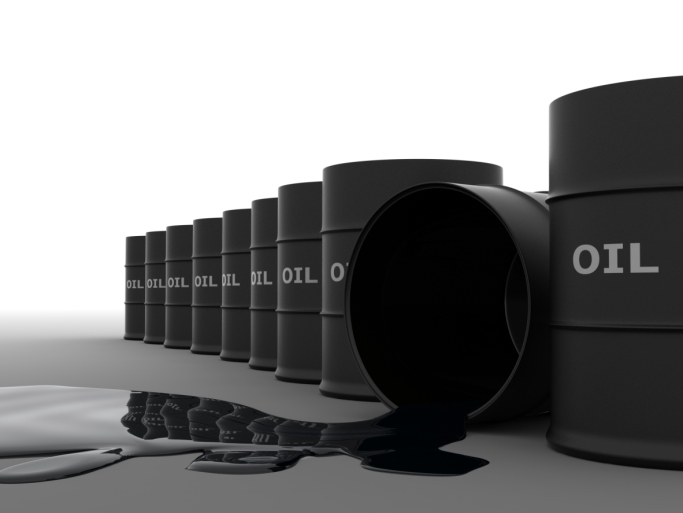Energy
Full Iran Resolution Could Send Crude Down Under $90, Maybe Down to $80
Published:
Last Updated:
This weekend’s deal with Iran could be a monumental shift of the international tides. Unfortunately, it could also be a monumental mistake as some international leaders have voiced. 24/7 Wall St. wanted to break out the news from the noise and take a look solely at the impact now and the potential impact ahead on what could happen to the price of oil. The obvious answer is that oil could fall, and the real issue is whether it would drop to $90 or begin a further drop from there.
For starters, most research reports we have seen suggest that the deal is a first effort and that the economic changes and exports will not be felt immediately. At the same time, the price of NYMEX oil has dropped from over $100 in October down to $94 or so now. This $93 to $95 area happens to be a critical pivot point for both recent and longer-term support and resistance levels on the price of NYMEX crude.
Brent Sea crude is trading at a wider spread again, but its price was down as much as $3 earlier on Monday and was challenging the $108 per barrel price.
Iran agreed with the United States, Britain, France, China, Germany and Russia to limit its enrichment of uranium to a maximum of 5 percent. This keeps the levels well under what is needed for nuclear weapons. Iran will get limited sanction relief, but Iran’s oil for exports remains under an embargo while negotiations continue for an enduring deal.
For now, it appears that Iran’s oil exports will remain about 1 million barrels per day. The question to ask is what happens if (or when) Iran is allowed to begin exporting oil again on the global markets rather than in selective country negotiated deals. Obviously, the answer is that much more oil could be available in the daily supply.
It seems as though that if Iran is allowed to begin exporting more oil that it could easily meet the entire global demand increase expected in 2014. The International Energy Agency recently released its World Energy Outlook 2013. Total oil supply was 89.3 million barrels per day in 2012, and the IEA has forecast that this demand will rise to 101 million barrels per day in 2035. Conventional crude oil’s share in total oil production was about 80% in 2012 and is expected to fall to two-thirds share in 2035.
The big trick is whether or not this deal comes to a full settlement soon, and a deal that all or most of the world’s superpowers are comfortable enough with that they will not try to kill it. If so, Iran could be a big oil exporter again. We have seen other reports signaling that oil could drop to $90 per barrel if a full deal is reached. Getting oil down to $80 is a different ball game entirely because many oil projects start to lose favorable economic benefits at that level.
Another consideration to make is that if oil starts to break under $90 then producers could simply turn off their less profitable operations. That instantly changes the supply side of the equation, which theoretically would drive the price up based upon simple supply and demand economics.
Another issue to consider is that many of the world’s central banks want more inflation rather than what we are seeing right now. That is the case in Japan, and the U.S. and the E.U. have both had central bank commentary about inflation remaining too low. So throw in another drop of $5 or $10 per barrel into the global consumer and producer pricing if oil were to fall to $80 again. It would almost certainly be deflationary.
It seems unlikely that a deal with Iran over its nuclear ambitions would create this much more destruction in the price of oil, at least in $80 terms. It seems as though $90 could easily be within grasp based upon current technical as it is only $4 away. A wild card is the historic evidence that markets always overshoot on trends when they are in full swing.
The EIA put Iran’s production at 3.59 million barrels per day. Exports are also shown to have fallen down to 1.5 million barrels per day. The EIA country analysis says, “Iran holds the world’s fourth-largest proven oil reserves and the world’s second-largest natural gas reserves. International sanctions are redefining the Iranian energy sector, and the lack of foreign investment and technology is affecting the sector profoundly. More than half of Iran’s oil reserves are confined to five giant fields, the largest of which is the Marun field.”
Getting down to $80 oil based solely upon Iran looks and feels like it is a stretch. Getting to $90, and then slightly lower, is another issue entirely.
The Average American Is Losing Momentum on Their Savings Every Day (Sponsor)
If you’re like many Americans and keep your money ‘safe’ in a checking or savings account, think again. The average yield on a savings account is a paltry .4%* today. Checking accounts are even worse.
But there is good news. To win qualified customers, some accounts are paying nearly 10x the national average! That’s an incredible way to keep your money safe and earn more at the same time. Our top pick for high yield savings accounts includes other benefits as well. You can earn up to 3.80% with a Checking & Savings Account today Sign up and get up to $300 with direct deposit. No account fees. FDIC Insured.
Click here to see how much more you could be earning on your savings today. It takes just a few minutes to open an account to make your money work for you.
Thank you for reading! Have some feedback for us?
Contact the 24/7 Wall St. editorial team.